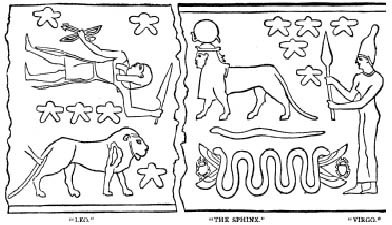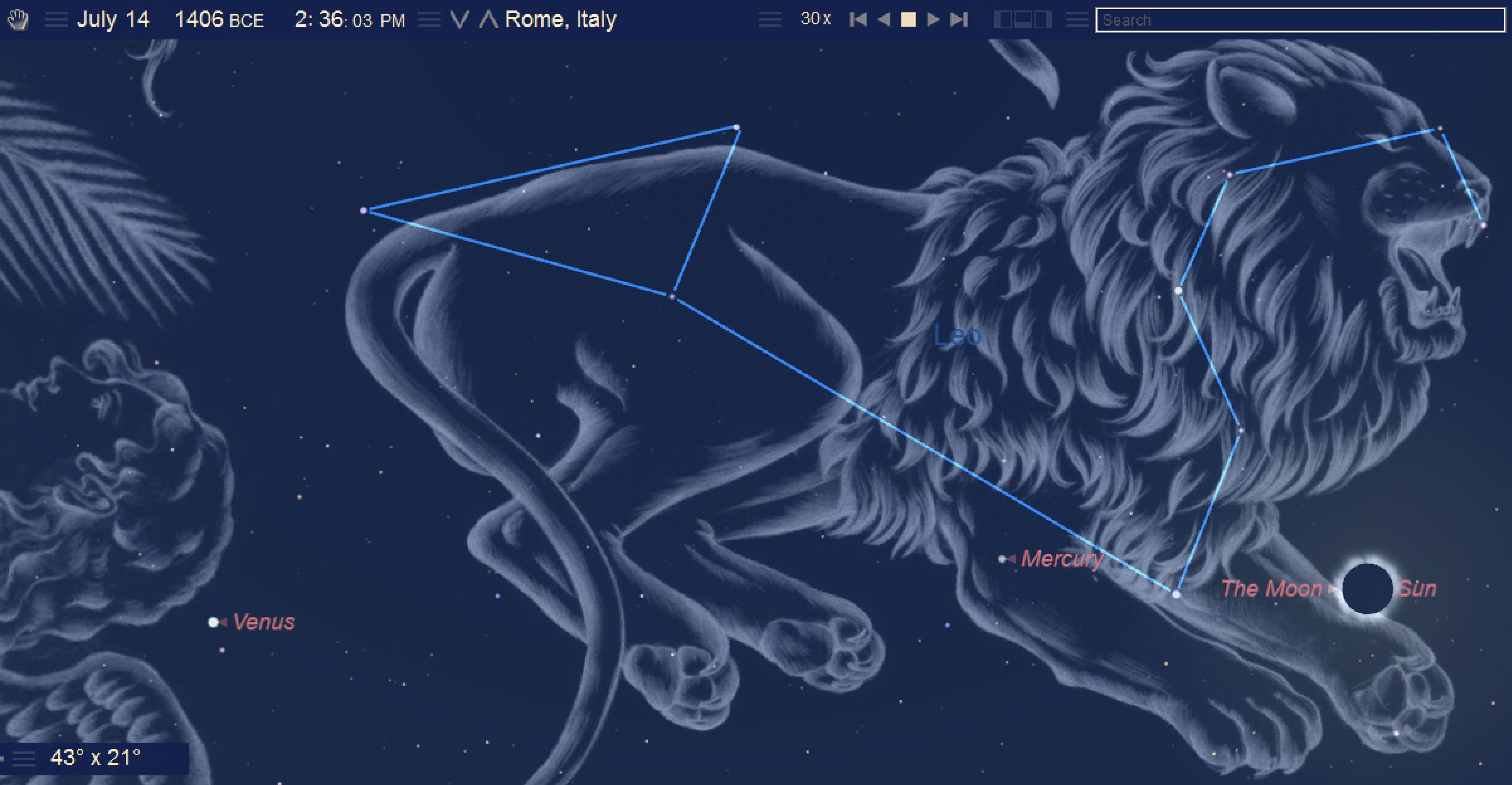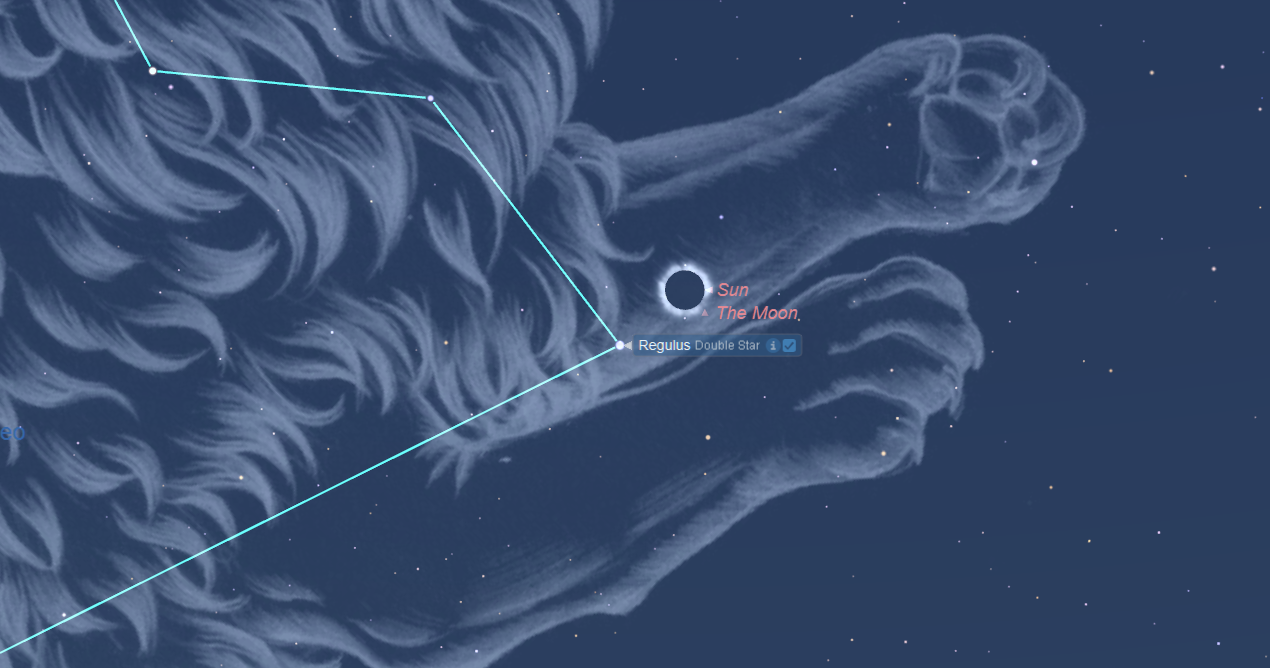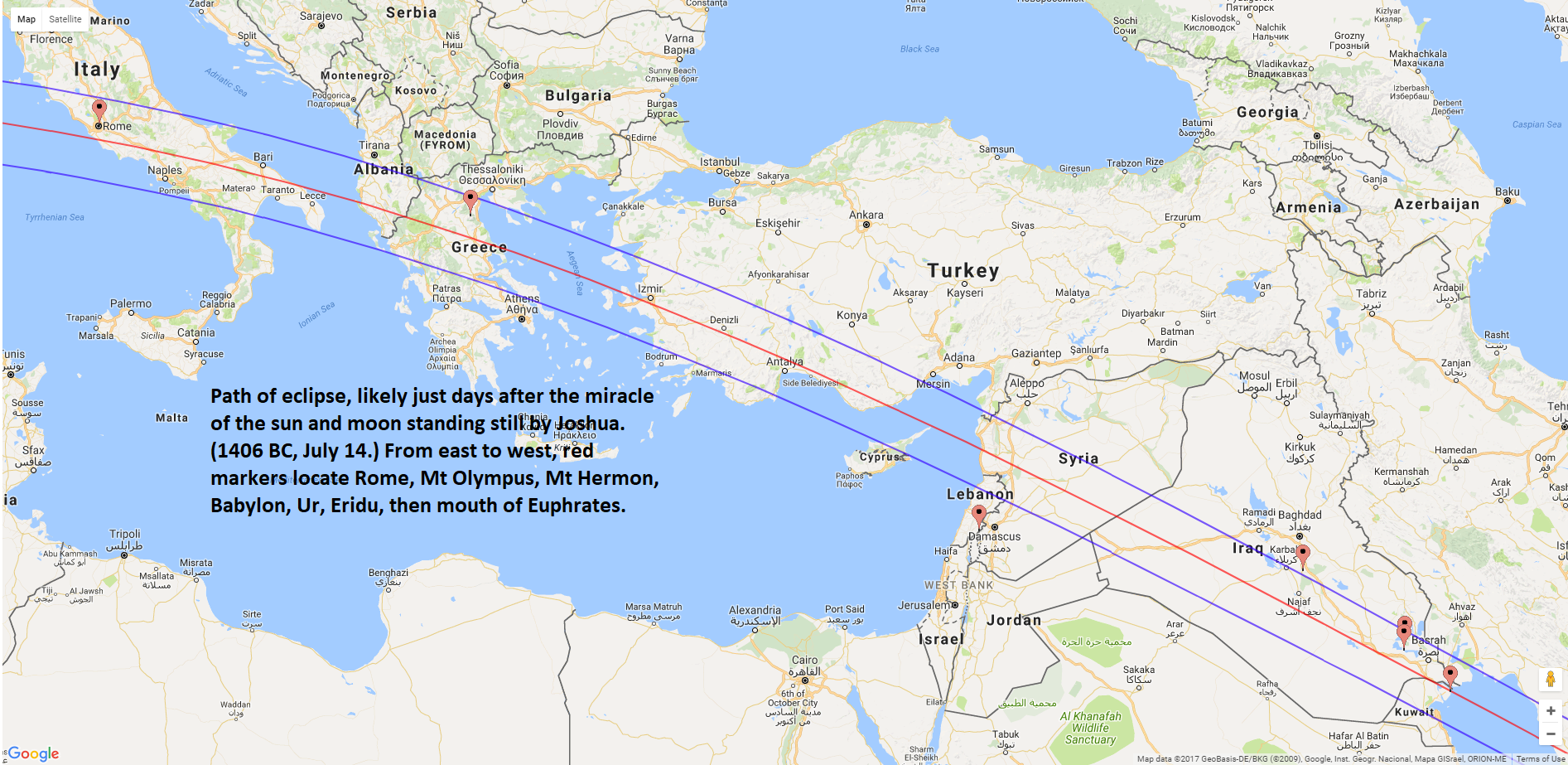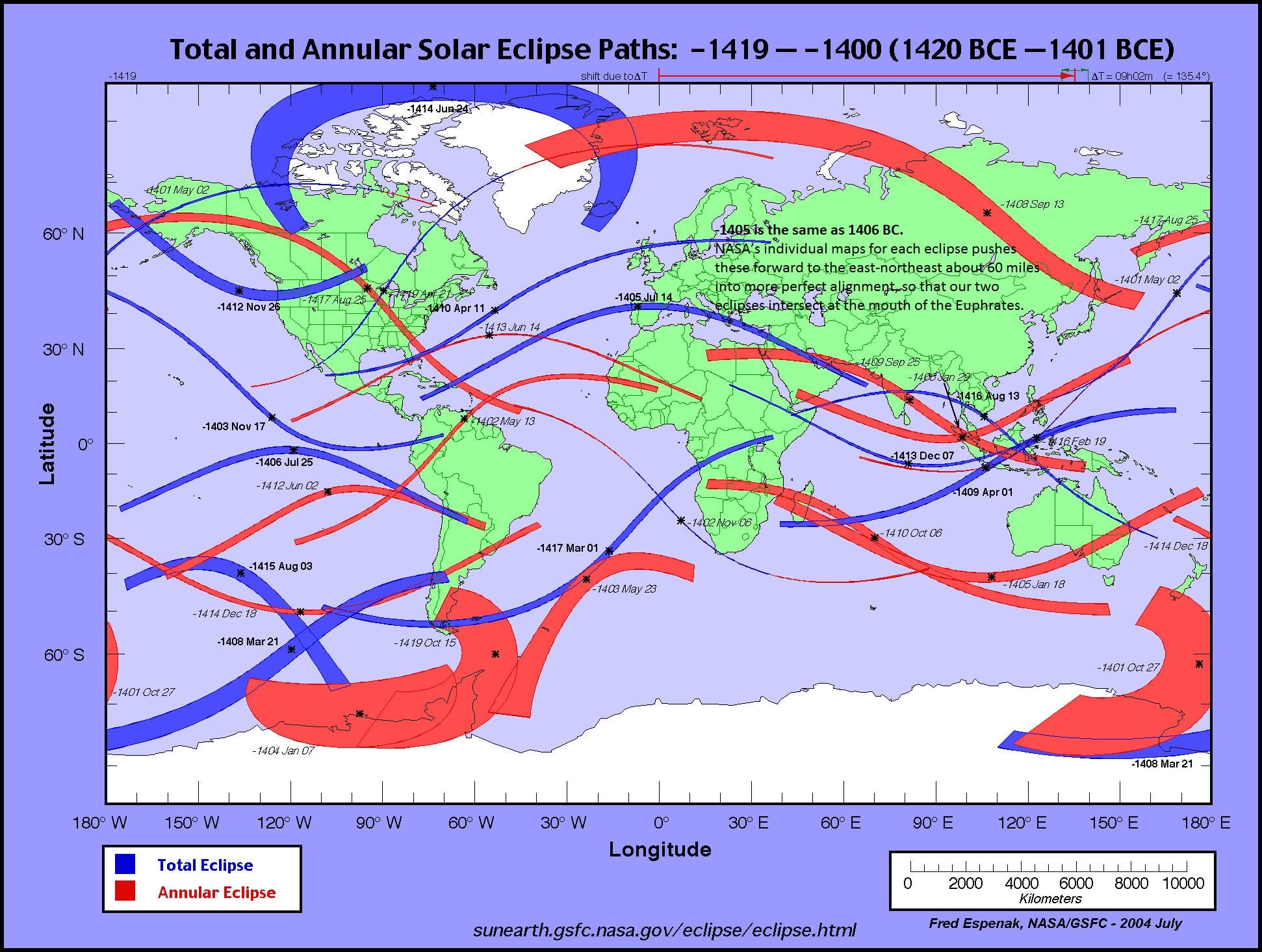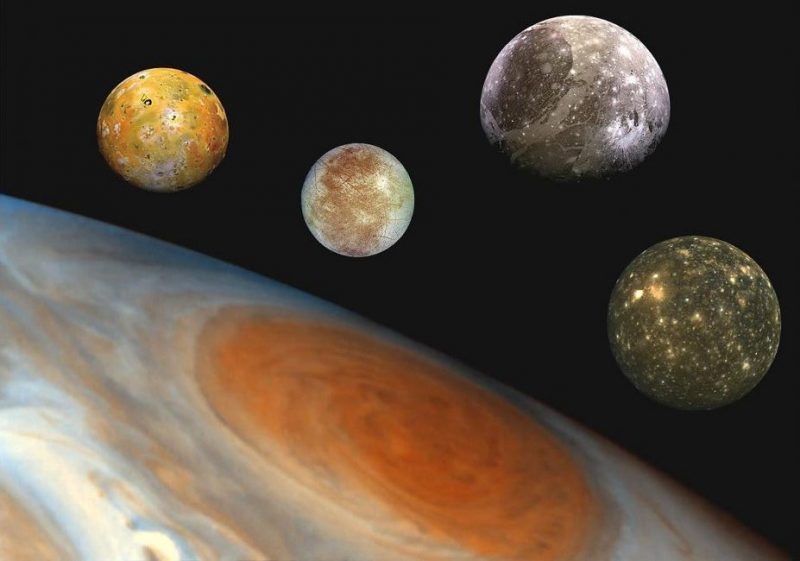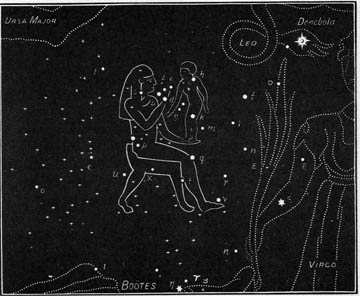
2024-2026 Purim Eclipse Triad and the Esther Acrostics
Happy Resurrection Weekend everyone and Welcome to the April 2025 Blog! This month we are picking up where we left off with the Pi Day/Purim Eclipse with an exciting Historical Contrast of Repeating Eclipses seen in 3 consecutive current Purim Eclipse Tetrads next to their ancient counter- parts in Queen Esther’s Bible text, with the 1st Repeating Eclipse Tetrads that opened starting 480 BC. As last year’s charts below show as the 2024 Eclipse Tetrad, aligns with 99% accuracy to a 480 BC Tetrad, starting March 25th, 2024 matches the same date in 480 BC. To synch our dates, 480 BC was the Year King Ahasuerus-Xerxes I chose as his Queen-Esther, in the same year as the battle of Salamis. As the 4th King of Kings of the Achaemenid Empire, reigning from 486 BC till his assassination in 465 BC, was the son of Darius the Great and Atossa, daughter of Cyrus the Great. #1 With these Repeating Eclipse Tetrads, the same eclipses occurred in 480-478 BC we’re gifted in 2024-26 to witness the same eclipses Queen Esther did in 480-478 BC. All 4 of these eclipses aligned to the exact same date, except April 2024’s eclipse that occurred 4/8/24, but in 480 BC it was April 9th. All other dates in this Purim Eclipse Triad match exactly, with 480-478 BC dates! Another way to express this is lets spend our Easter with Esther…

| Comparison Chart#1 for Repeating Eclipse Tetrads 2024 AD with 480 BC #2 | ||||
| Eclipse Date | Saros # | Sun/Moon | Eclipse Date | Eclipse/type |
| 3/25/2024 AD | 113 | Lunar | 3/25/480 BC | Penumbral |
| 4/08/2024 AD | 139 | Solar/Nisan1 | 4/09/480 BC | Total |
| 9/18/2024 AD | 118 | Lunar | 9/18/480 BC | Partial |
| 10/2/2024 AD* | 144 | Solar/Tishri 1 Trumpet Feast |
10/2/480 BC | Annular |
The eclipse I saw Friday night on 3/14/2025, 2nd of 3 consecutive Purim Total Eclipses from 2024-2026, the Moon moved between the signs of Leo and Virgo. This is noteworthy, occurring between a union of the Celestial Sphinx in Leo and Virgo [see Fig. 4 below] marking the Rev. 12 sign, with the intersection of the Comet Atlas, whose path crossed the Leo-Virgo border on 3/14/25, sealing the Purim Total Blood Moon Lunar Eclipse. While in Leo, the Blood Moon was seen, under the lion’s hind paw, at the start of the eclipse; soon after, it crossed over the border into the head of the constellation Virgo. This eclipse marked by a Comet being such a rare event, recalls Israel’s Independence Day on 5/14/48, separated by 77 years and 2 months [926 months] to the day!
Noted celestial events in 1948 included the largest Super-Moon in Israel’s recent history, prior to the Blood Moon Tetrad of 1949-50. Other heavenly signs such as Comets were visible at this time, with Israel re-forming as a nation-state for the first time in nearly 2000 years. This “Eclipse Comet” is pictured in Fig. 1.
Figure 1. Eclipse Comet of 1948. #3

Photograph of the Eclipse Comet of 1948 taken on Nov. 13, 1948, by V.P. Victor at Harvard Observatory’s southern station in Boyden, South Africa. Courtesy of Harvard University.
Those aboard a Royal Air Force plane flying at 4000 meters, detected a brilliant Comet two degrees southwest of an eclipsed sun; was apparently as bright as magnitude -3 and was reported as having a tail that stretched a considerable distance towards the horizon. Within a few days this Comet became visible in the dawn sky before sunrise, and by several days after that was widely seen from throughout the southern hemisphere as being between 1st and 2nd mag. and with a relatively straight dust tail up to 20 degrees long. (The first reported post-eclipse sighting was made on November 4, by Captain Frank McGann of Pan American-Grace Airways while flying near Kingston, Jamaica; together with the R.A.F. detections during the eclipse, these would constitute the first comet discoveries made from an airplane.) The Comet was never formally named but instead is referred to as the “Eclipse Comet of 1948.” Although it remained best visible from the southern hemisphere, the Eclipse Comet became visible from the northern hemisphere during the second week of November – still at 2nd mag. and with a tail almost 30 degrees long – and remained visible to the naked eye till mid-December, with its final detections being made in April 1949, in view of the 4/13/1949 Passover Eclipse in Comparison Chart #4 with matching Saros numbers to the Passover Eclipse on 4/24/1967AD. #4
The “1948 Eclipse Comet” was spectacular in its approach to the Sun in early November with a Total Solar Eclipse. This eclipse took place a week after Sukkot, at sundown-Nov. 1st, opening the 8th month-Rosh Chodesh Chesvan. It was first noticed as a brilliant object about 2 degrees southwest of the Sun during the Total Solar Eclipse of Nov. 1st, near -2 mag, with a 20 degree tail. Its southwest path through Hydra in Nov.- Dec. as a 2nd magnitude object with a tail up to 30 degrees long, was visible in the South & low Northern latitudes. The 1948 Eclipse Comet with long tail near the eclipsed Sun as if the Sun was holding a sword. As it passed through Hydra-the Serpent destroyed, the sword was raised against the serpent-enemy persecuting Israel. As a prelude to the 1949-50 Blood Moon Tetrad, this “Eclipse Comet“ enlightened the luni-solar Saros matching Eclipse Tetrads that followed in 1967-68 marking Israel’s re–taking of Jerusalem, followed by the next Blood Moon Tetrad of 2014-2015.
Fig. 2 12P/Comet Pons-Brooks shows near a Total Solar Eclipse in the Jan.-Feb. 2025 Planetary Alignment.#5
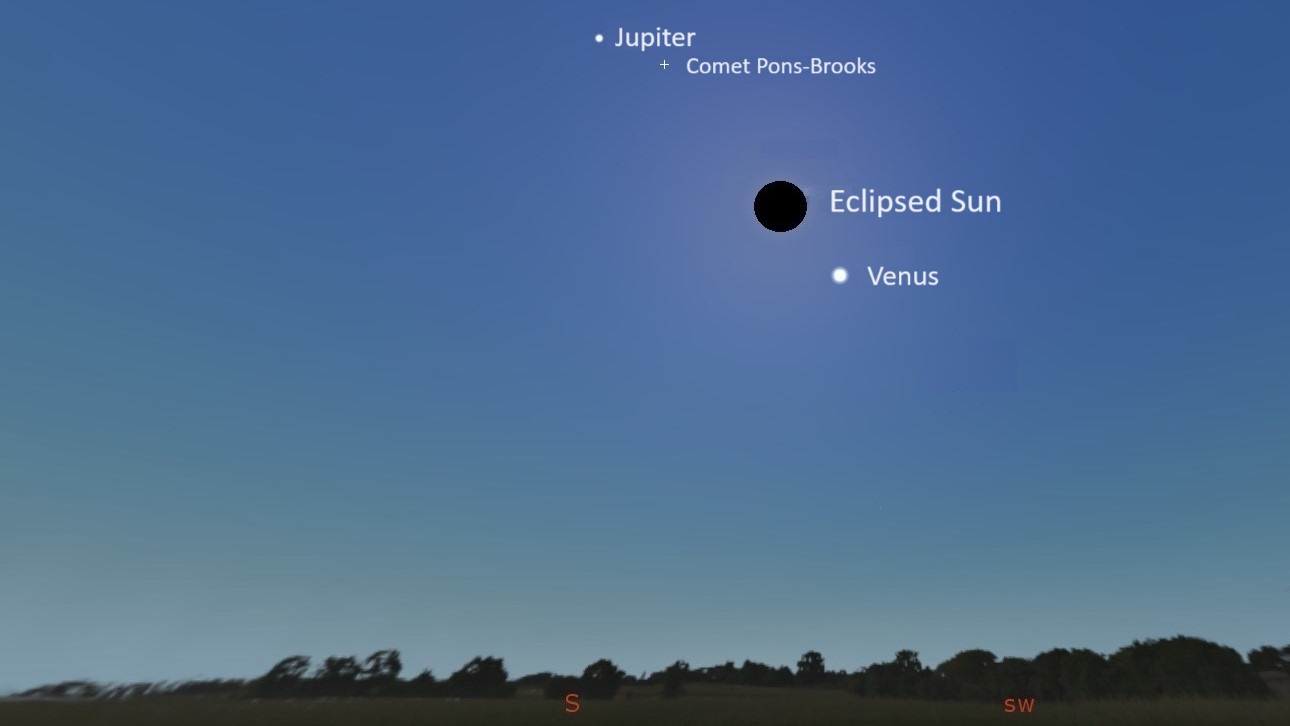
During the Total Solar Eclipse on April 8, 2024, the sky darkened enough that we were able to see Venus and Jupiter. 12P/Comet Pons-Brooks was close to Jupiter, while Venus was closer to the eclipsed Sun. Image via Stellarium/ Kelly Kizer Whitt. See Comet Pons-Brooks on eclipse day!
Not one, but two Comets appeared near the Sun during the 4/8/24 Total Solar Eclipse, that took place as part of the 7 Planet alignment in Jan.-Feb. of 2025. The expected Comet 12P/Pons-Brooks, was much dimmer than anticipated. But a relatively unknown Comet SOHO-5008 also appeared in long duration camera exposures. This Comet, as the 5008th comet appeared on images from ESA and NASA’s Sun-orbiting SOHO spacecraft. Likely much smaller, Comet SOHO-5008 was a sungrazer that disintegrated within hours as it passed too near the Sun. This featured image was not only unusual for capturing two Comets during the 4/8/24 Total Solar Eclipse, but a rare time that a Sun-grazing Comet has been photographed from the Earth’s surface. Also visible in the Fig. 3 image below is the sprawling corona of our Sun & the planets Mercury (left) and Venus (right). Only Venus was easily visible in a dark shadow of the Moon that crossed North America forming an “X” in America’s Heartland on April 8th, 2024. #6
The serendipitous capture of multiple Comets during an eclipse, a rare event where the delicate and expansive solar corona is also visible, highlights the unpredictable excitement of Sky-watcher’s. This chance alignment provided a unique scientific opening to observe the behaviors and traits of Sun-grazing Comets as they disintegrate—a fleeting moment in the Cosmos, captured due to ever vigilant solar surveillance. As Comets venture near the Sun, they unveil a dramatic transformation, with icy hearts ablaze-stalking the dazzling light of our world, form glittering haloes to illumine our vision, reminding us of the Celestial Gospel preserved in the tapestries of the Ages in His luminous night sky, via His Graceful Celestial Grandeur with the touch of the Master’s Hand.
Fig. 3 Astronomy Picture of the Day#7
These two Eclipse Comets detached by 77 years marking Israel’s Rebirth as a State, seem to add an official legitimacy to the stellar elements of the signs Leo- the Lion body of the Sphinx, tied to the female head of Virgo in the Celestial Sphinx. An ever-present interest in Jesus’ birth signs is they bear the celestial seal and signet of the Great Sphinx, the Alpha and Omega signs of the Hebrew Mazzaroth. These signs occur in a 3-week annual period as the Sun is clothing Virgo, with the Moon at her feet, in the Rev. 12:1 sign, including Virgo’s triple Crowns.
The Celestial Sphinx as seen below, follows the structure of the Great Sphinx on the Giza Plateau. In addition to marking the Alpha and Omega signs of the Celestial Canon, the Great Sphinx mirrors tying Scripture together from Genesis to Revelation, seen in verses where Jesus is the Lion of the tribe of Judah in both Gen. 49:8-10 and Rev. 5:5, the first and last books of the Bible.
Figure 4. The Celestial Sphinx. #8

As we view the celestial context of Jupiter and Regulus‘ first union, marking the birth of Christ, +3 days [9-14-3 BC], we find the head of Virgo rising above the east horizon under the full body of Leo the Lion on the ecliptic. This shows what observers near Palestine facing east saw this date, clarifying the Great Sphinx’s astronomical symbolism as a landmark and monumental predictor of Jesus‘ birthday on 9/11, 3 BC, to forecast his birth, preserved in stone on the Giza Plateau from antiquity! This monolithic prophecy of Christ’s birth, seen in the Rev. 12:1-5, sign in Virgo, confirmed this Bible truth. A key signal of the unity of the Great Sphinx’ stellar aspects, our notice of the Celestial Sphinx, Virgo’s head with Leo the Lion, afford a basis for the 3-2 BC signs of the Jupiter-Regulus triple union in Leo, seen in Gen. 49:8-10.
The unified testimonies of the Celestial Gospel and God’s Written Word are linked in these Alpha-Omega Signs of Great Sphinx to the Coming Promised Seed.
What is important about the Purim Eclipse Triad? As 3 Passover/ Tabernacle Eclipses marked the reforming of Israel and Jerusalem under Jewish control in modern times, so the Purim Eclipse Triad marks key developments for Israel and her enemies in opposition today.

| Comparison Chart#2 for Repeating Eclipse Tetrads 2025 AD with 479 BC#9 | ||||
| Eclipse Date | Eclipse type | Sun/Moon | Eclipse Date | Saros# |
| 3/14/2025 AD | Partial | Lunar | 3/14/479 BC | 34 |
| 3/29/2025 AD | Total | Solar | 3/29/479 BC | 60 |
| 9/07/2025 AD | Partial | Lunar | 9/07/479 BC | 39 |
| 9/21/2025 AD | Annular | Solar | 9/21/479 BC | 65 |
| Comparison Chart#3 for Repeating Eclipse Tetrads 2026 AD with 478 BC #10 | ||||
| Eclipse Date | AD | Sun/Moon | Eclipse Date | BC |
| 2/17/2026 | AD | Solar | 2/17/478 | BC |
| 3/03/2026 | AD | Lunar | 3/03/478 | BC |
| 8/12/2026 | AD | Solar | 8/12/478 | BC |
| 9/28/2026 | AD | Lunar | 9/28/478 | BC |
First, the festival of Purim itself is unique in that it’s preceded by a Sabbath of Remembrance in [Num. 10:1-10] as Israel travelled through the wilderness they were to blow their trumpets in all their generations. As Num. 10:9-10 reads;
9 And if ye go to war in your land against the enemy that oppresses you, then ye shall blow an alarm with the trumpets; and ye shall be remembered before the Lord your God, and ye shall be saved from your enemies.
10 Also in the day of your gladness, and in your solemn days, and in the beginnings of your months, ye shall blow with the trumpets over your burnt offerings, and over the sacrifices of your peace offerings; that they may be to you for a memorial before your God: I am the Lord your God.
The word “beginnings“ in v. 10 is [rosh-72`18] #11 of your months- refers to the New Moon [Rosh Chodesh] when God commanded Moses to put Israel on a lunar calendar in [Ex. 12:1-2], which they have been ever since. An outcome of this is not only the impact of lunar eclipses in Israel, like three consecutive Purim Eclipses, but also modern Blood Moon History linked to Israel, shares context for this Triad of Purim Eclipses. As Israel’s new State formed in 1948, marked by Partial Lunar Eclipses on High Feast Days of Passover-[4/23/48] & Feast of Tabernacles [10/18/48], trailed by 1949-50/1967-68 Passover/Tabernacle Eclipses, as seen in Chart #4. A unique trait of these eclipses that most haven’t seen; the 1949/67 & 1950/68 Passover/ Tabernacle Eclipses paired in matching Saros Cycles, according to Chart #4 below.
Figure 5. Three Purim Eclipses in a Row. #12
As the origins of the Purim Holiday are unique to the Book of Esther, with it’s historic narrative, its highly noteworthy that these initial Repeating Eclipses with consecutive matching dates are found opening the Timeline of the Book of Esther, correlated to the 2024-2026 Purim Eclipse Triad. But this is only an opening salvo that persists in the entire 480-471 BC decade of consecutive dates that match, starting with the Repeating Purim Eclipses of 2024-2026 AD. As we view Esther’s text records Ancient Persia’s Biblical history, holding not only King Ahasuerus/Xerxes I, but also Haman’s actions and his genocidal evil plot to extinguish the Ancient Jews, reveals stunning parallels to modern times of ancient blood feuds, rooted in Gen. 3:15 between the 2 seeds-the Seed of the Woman and the Christ-line vs. the serpent’s seed. In Esther’s text, we find the rise of the Queen guided by Mordecai’s wisdom, set against Haman’s Evil plot. In this sense, Haman is seen as an embodiment and forerunner of the future Antichrist-found in the comparison that follows. This implied contrast is not random, but as seen in Charts #2-3 above, this Bible based parallel of Esther vs. Revelation’s “End times,” holds many details to get our attention! The Chart below compares the rise of Haman to the Antichrist, that contrasts the Purim Eclipse Triad to matching Repeating Eclipse Tetrads from 480-478 BC.
| Comparison Chart for Haman vs. Anti-Christ | |||
| Open Tribulation | Esther | Revelation | |
| Authority | Esth. 3:1-2, 10 | Rev. 13:5 | |
| Worship | Esth. 3:2-5 | Rev. 13:6 | |
| Jews | Esth. 3:6-8 4:7 [Bribe] | Rev. 11:7 | |
| Astrology/witchcraft | Esth. 3:7, 9:24 | Rev. 17:1-6 | |
| Genocide | Esth. 3:9,13. | Rev.13:7 | |
| King’s Vizier | Esth. 9:4 | Esth. 3:10-12 | |
| 10 Sons/Kings | Esth. 9:10-14, 25 |
Rev. 17:12-13 | |
| End Tribulation | |||
| Lion King’s Victory | Esth. 9:14, 25 | Rev. 17:14 | |
| A New Purim Holiday Feast | Esth. 9:17-22 Esth. 2:18 |
N.T. Feast | |
| Judgment | |||
| Reverse Genocide | Esth. 9:1, 15-16, 7:9-10 | Rev. 17:12-13 | |
| Mordecai | Esth. 9:3, 10:3 | ||
| Jews | Esth. 9:2 | ||

| Comparison Chart#4 Saros Matching 1949-67 & 1950-68 Eclipse Tetrads #13 | ||||
| Eclipse Date | Saros # | Jew’s Feasts | Eclipse Date | Scripture |
| 4/13/1949 AD | 121 | Passover | 4/24/1967 AD | Am 9:11-15 |
| 10/07/1949 AD | 126 | Tabernacles | 10/18/1967 AD | |
| 4/02/1950 AD | 131 | Passover | 4/13/1968 AD | Ezek. 36:24 |
| 9/26/1950 AD | 136 | Tabernacles | 10/6/1968 AD | |
In grasping the importance of Chart#4 it will help to understand the roots of the Saros cycle related to the Hebrew Calendar. The Israelites recognized the start of the New Moon cycle correlating it to the beginning of their months, as God instituted the new Lunar Calendar with Moses and Aaron in Exodus 12. Their practice of Intercalation of months, dates back to this time of Moses, who instituted sacred precepts of the Old Testament Law during Israel’s wanderings in the wilderness in the mid-second millennium BC. This is prior to Meton of Athens, who was credited for discovering the lunar cycle called a saros in 432 BC, by at least 1000 years. But the roots of the word “saros” and its practices, are much older. Israel’s calendar was governed by the 354-355 day lunar year with twelve months of 29 or 30 days. The named months of the Israelite year coincided with the Babylonian months, after the Babylonian Captivity, with Adar Sheni, the intercalary 13th month, that was added to keep the solar year aligned with the seasons of the lunar cycle. This practice of intercalating months kept sacred Feasts of Passover, Rosh Hashanah, Tabernacles, Pentecost and New Year’s Day, in their aligned seasons of Spring, early and later summer. An 11-day gap between the solar & lunar years expands to a period of 7 months over the 19-year lunar saros. During this 19-year period, exist 235 full moons in the Metonic Cycle. If we divide 235 by 19, we get 12 7/19, [12.368] full Moons, synodic, in lunar months of 29.53 days a year. There are 13.368 sidereal months or 12.368 synodic months, the time for the Moon to return to the same point in the sky against the back-drop of the stars, in each year. #14]10
It is interesting to find the interplay of the numbers 12 and 7 involved in the celestial coordination of the solar and lunar cycles, especially since these two central numbers ordering the temporal world of God’s Creation, total 19. We find similar evidence of this pattern evident, in the 235 (12 x 19 +7), full moons that make up the 19 solar-years of the lunar saros, dividing into 12 years of 12 months (144 mo.), and 7 years of 13 months (91 mo.) combined! These 7 years of 13 months were added in the 3rd, 6th, 8th, 11th, 14th, 17th and 19th years of the 19-year Metonic cycle, all containing the extra month of Adar–Sheni.[.#15]11

Curiously, we also find the pervasive impact of the Fibonacci Series at work in this Intercalation of extra months, because during the first 8 years of this 19-year lunar cycle, 3 of the years require the added month, while 5 do not (3+5=8). Since the Fibonacci Series begins 1,1,2,3,5,8,13 etc. the next digit is 21, the sum of the previous two: 8+13, etc. So, we see the start of a 19-year Metonic repeat cycle conforming to an early progression of the Fibonacci Series. This is a key since there are other lunar repeat cycles that occur after 3, 5 & 8 years! This exhibits the idea that some lunar cycles feed off Fibonacci series’ recursive numbers. We also may find Fibonacci numbers influencing, 5 synodic periods of the planet Venus, equal to 8 Earth years and 13 orbital revolutions. As the Fibonacci Series progresses, it approximates the golden section at escalating levels of accuracy.
E.C. Krupp provides historical evidence of some of these lunar repeat cycles recognized in ancient Babylon, in his following statement: “at least by 1000 BC, Babylonian calendar priests were intercalating months according to an 8-year cycle. During this period 3 extra months were added.”13#16] Thus, not only do plant leaves grow in a spiral pattern conforming to the Fibonacci Series, so that they receive the maximum amount of sunlight, for optimum growth through the 12-fold pattern of Photosynthesis, but even the solar and lunar cycles themselves also follow the dictates of this numerical sequence! As these 2 great lights shed their three-fold light upon the Earth, their radiant orbital dance illuminates the Earth according the golden lines of the phi ratio. This harmonizes with the universal symmetry that the Almighty Creator installed in His Creation in the Beginning.
With every 19 solar years, plus two hours, the Sun and Moon return to meet each other at the same appointed time and place in the sky. The saros, however being an eclipse lunar cycle, consists of 19 eclipse years, which is only 18 solar years plus eleven days. An eclipse year consists of 346.62 solar days, which is equal to 11.738 full moons. When we divide the saros by 11.738, we get 1.618, (or phi), accurate to 4 digits!#1714 This shows us a comparison between 2 lunar cycles (eclipse years & full moons) which harmonize according to the phi ratio. Since the Sun intersects a lunar Node twice every 346.62-day eclipse year, we see how the solar and lunar cycles might also be linked by the phi ratio. As we consider the Calendar of Israel, unified in the luni-solar cycles according to phi, in concert with Israel’s sacred fifty-year Jubilee cycle, the impact of this pattern in the Natural Order is evident, because there are 618 full Moons in any given 50-year Jubilee cycle. As the Hebrew calendar shows the correlation of sacred and secular celestial cycles governing the Rhythm of a myriad terrestrial and cosmic cycles, we find the evident signature of the Creator and His dominion of Light reflected in the light-bearers in the heavens, the Source behind all kingdoms of earthly life. This exhibits the relation between the civil [lunar], and sacred [solar] years of the Calendar of Israel, in the larger context of precession. These related standards of the sacred and secular are also unified in the promised seed, Jesus Christ as the Priest–King of Israel and light of the world, in his rule over all terrestrial circadian bio-rhythms, and other domains of terrestrial life, [1 Cor. 15:23-28] Thus we find the ancient practice of the Intercalation of months in the Calendar of Israel, rooted in the Creator’s sacred temporal ordering of the Cosmos according to an underlying Symmetry of the Phi ratio.
The roots of the word for saros are much older than Meton’s application of the term. In fact it goes back at least as far as ancient Sumeria, since the Sumerian name for the great lunar eclipse cycle was too called the saros. This word also traces through the basic Babylonian unit of measure called a “sar,” showing ancient elements of a sacred celestial rule of measure. The period of lunation consisting of 18 years and 11, (10.96) days, was utilized by the Chaldean priests to predict eclipses. Wallis Budge said that; “the Babylonians were a nation of stargazers observing appearances of the moon, eclipses, and planets etc .”#18
The Chaldeans also had a period of 3600 (60 x 60) years that they called a saros. Here again we see the base 60 pattern behind their organization of the heavens, including the cycle of the Moon joining Saturn and Jupiter every 60 years in a celestial dance. Jupiter-Saturn conjunctions show the essence of the “base 60” numerical system as part of its function as a cornerstone of a model of Biblical cosmology that also provides the context of the Celestial Prelude, marking the birth of Christ. Additionally, it gives us a window on the “celestial mechanism” that frames the Celestial Gospel, the precession of the equinoxes. This is fully explained in the Specific Signs of the Celestial Prelude. Both Jupiter & Saturn frame the ancient solar system as its two outer-most naked-eye planets, while opening a window on precession. It also shows a unity of Saturn’s 29.5-year orbit with the 29.5-day lunar cycle on a year-day basis. This is half the base 60 order of the luni-solar system, the other half being Jupiter’s near 12-year cycle, spending a year in each zodiacal sign, even as the Sun spends a month in each of the 12 signs. The solar half of the order, with Jupiter, is based on a division of 60, by twelve (12 x 5), and the lunar half, with Saturn by thirty [30 x 2], both multiples of 60. This universal harmonic symmetry from the Hand of the Almighty Creator, is found as the building blocks of the Universe resonate with the mathematical patterns and Fibonacci numbers of the Phi Ratio, that underlie God’s Natural Law of the Universal Order. The Sound waves of the Creator’s Voice as He spoke all Creation into existence in Genesis 1 with And God Said Let there be light… this created the basic link between the spectrums of Sound and Light, the basis of all Creation.
The word Sar the root of saros is doubtlessly tied to the Hebrew word [*H8269] of the same spelling, meaning “prince, captain, chief, ruler, leader, head.”#19
The word has retained this meaning even in modern usage, as in the Tsar of all the Russia’s. As a testimony that links to the roots of what may have been an early human language, Aesar is a word for “God” in both, Icelandic & Irish, Osar in Egyptian like Osiris was the prince. Even the English word “sir” and the Roman “Ceasar” are traceable to this root. It is used in Daniel 10:13 & 20, referring the Archangel Michael who routed a fallen angel (Daimon), opposing the messenger angel that God sent to answer Daniel’s prayer. In Isa. 9:6, a great prophecy of the promised seed, its used of the Messiah as Sar–Shalom, the Prince of Peace, the one who brings peace to all Creation. [Rom. 8:19-23, Eph. 2:11-18]
According to Hislop, The Chaldean version of this word: Zer, meaning “to encompass” gives us not only the English basis for; “Zero signified by a circle among the Chaldeans,” but also Zero; “the seed.”15 It also relates to the Hebrew word “zera” [*H2233], used referring to the Promised Seed in Genesis 3:15. To this end the Chaldean word for the “woman’s promised seed” was Zero-ashta, that also formed the basis of the name Zoroaster. #20 We should note here that the Zoroastrian writings in the Zend-Avesta predicted the return of Zoroaster as a Messianic Savior who would renew all existence in preparation for the Last Judgment. These references to the woman’s promised seed point directly to the general sign of the Celestial Prelude. Hislop also notes:
“In many nations, not only was a great god known under the name of Zero or Zer; the seed, and a great goddess under the name of Ashta or Ishta; the woman, but the great god Zero is frequently characterized by some epithet which implies that he is The only One.”[The Two Babylons Hislop, p. 59.#21]16
This evidence provides a strong basis for a direct correlation to Coma, the seed as the desired of the nations, [Hab. 2:7] specifically in view of a supernova in the child’s head, of the Decan Coma showing the Woman raising the Promised Seed, during the general sign of the Celestial Prelude. Hislop goes on to say: “As he who by the Chaldeans was regarded as the great Seed was looked upon as the Sun incarnate, [Ps. 19] and as the emblem of the Sun was a circle, the hieroglyphic relation between zero; “the circle,” and zero; ‘the seed‘ was easily established.” #22]17
This summary of the Phi ratio as it relates to Luni-Solar cycles and the 50- year Hebrew Jubilee, hopefully provides an enlightening context to show how the Almighty Creator designed certain Laws of Nature behind celestial cycles of the Sun, Moon & Stars to announce the birth of His long Prophesied Only Begotten Son-Jesus Christ. How this narrative links to the history and destiny of the Jewish people and their nation becomes more intriguing when considered from multiple Bible perspectives. Let’s consider the Name of God, with its related figures of Speech, as found in the book of Esther.
THE NAME of the Lord in the book of Esther.
It has been observed by many that no Divine Name or Title is found overtly in the book of Esther. Many years before, the Lord had warned Moses that when Israel drifted away from Him, He would hide His face from them (Deut. 31:16-18). Here the author reminds us that though God is hidden, He is still active in sovereign grace on behalf of His children. Though the book reveals Him as overruling all, His Name is hidden. It is there for His People to see, not for His enemies to see or hear.
Satan was at work, using Haman to blot out the Nation, as once before he had used Pharaoh for the same purpose. Jehovah’s counsel must stand. His promise of Messiah, the coming “Seed” of the woman (Gen. 3:15), did not fail. Therefore, He must overrule all for the preservation of His People, and of the line by which that “Seed” was to come into the world. His working was secret and hidden: hence, the name of “YHVH” is hidden secretly four times in this book. God hid His name in the text, so His Name does not occur overtly to be sounded out, it appears so that it may be visible to the opened eyes.#23
THE FOUR ACROSTICS.
The following phenomena are noticed in examining the four Acrostics which form the name “Jehovah”: That the author has hidden the name of God in the text in four places, with a special fifth seen below. He has used an acrostic to do so. An Acrostic takes a letter from a series of words to spell out a secret code word. These four Acrostics have differences from each other, yet are similar. Though God was not With them, He was For them, He was present working for them to deliver, yet hidden from them.#24
A problem for the English reader is that the acrostics occur in Hebrew, and are difficult to reproduce in English. The first occurrence is in Esth. 1:20, and as the first, it uses the 1st letters of each word in the verse to form the Acrostic. The first Acrostic was formed by spelling the word backwards, as Jehovah was overruling and turning back the wisdom of Man.
1) In Esther 1:20, the first Acrostic spells the Lord‘s name backwards. As the first Acrostic the 1st Hebrew letters of “Due Respect Our Ladies shall give to their husbands both great and small.” This counsel results in Esther replacing Queen Vashti. Thus Esther was put in the right position to thwart Haman’s plot when it presented itself.#25 [Est. 4:14]
2) In Esther 5:4, the 2nd Acrostic shows the Lord’s name spelled forwards, formed in initial letters of the words, as the Lord initiates His planned rule, spelled forwards in English– “Let Our Royal Dinner this day be graced by the king and Haman.” With “God“ Named in Esther‘s Dinner invitation, Jehovah was 4th Present at the banquet to, “bring the counsels of men to nought” to “take the wise in their own devices.” [Est. 5:14] #26 This invitation not only secured the roll call for Esther’s Feast, [Esth. 2:18] but too served as the King’s official sanction, that wound up as Purim’s Holiday. The first Acrostic pair both form the Lord’s Name in initial letters of the 4 words. The last Acrostics also pair, forming the Lords Name with the last letters of the four words. The 1st & 3rd Acrostics also pair being spelled backwards, & spoken by Gentiles. The 2nd and 4th also pair up with the Lord’s Name spelled forwards, [ruling regarding His own people unknown to them] spoken by Israelites. #27 Haman left the dinner in joy, and with a glad heart, [Est. 5:9] as he was the only other inclusion on the guest list with the King and Queen, yet it was to be his final joy and last day of the serpent’s seed-Haman, who foreshadows the doom of the future Anti-Christ. Esther’s speech to ensnare Haman, put the king in such a state of anticipation and curiosity, that he eagerly granted the Queen’s wish.
3) In Esther 5:13, the 3rd Acrostic shows the Lord’s name spelled backwards as God reversed Haman’s pride-filled purposes. As the last letter of the series of words, initiates Haman’s end game, He went home to his wife saying; “Yet I am saD, foR nO avaiL, is all this to me.” #28 Haman’s bitter words as Mordecai refused to bow in his presence–led to constructing the gallows where he himself was executed! Haman’s sadness was prelude to his soon demise, that reached its climax in the fourth Acrostic.
4) In Esther 7:7, a 4th Acrostic shows the name of the Lord spelled forwards, again using the last letters of the words instead of the first, via God’s rule; “He saw there was eviL tO feaR determineD against him by the king.” #29 Haman’s doom in this acrostic stating the Lord’s rule that emerged via His foreknown outcome. Haman’s evil end came quickly upon him, as they took him at once to hang him. So the Four Acrostics both conceal & reveal Jehovah’s Name to emphasize the four pivots upon which this history turns.
5) In Esther 7:5, the “I AM” name of God is found. The Hebrew word could be rendered with the English letters EHYH (pronounced hayah). As with all these Acrostics, they are verified by Massoretic authority, written in larger letters in certain MSS. When King Ahasuerus/Xerxes I, learned from Esther that the Jews enemy had laid this plot of genocide, he cried out; “Who is he and where is he… #30
This acrostic is formed by the final letters of the words and spelled backwards. The Lord told Moses this was His name (Exod. 3:14-15). In the last acrostic, the “I AM” name of God is spelled forward, using the final letters of a word series. “WherE dwelletH the-enemY that-daretH presume in his heart to do this thing?” He uses words whose final letters spell the Name EHJHE (pronounced E-He-Yhe) both backwards & forwards-#31 As a Palindrome, has the properties of reading the same forwards as backwards. This Figure seems to show that God is God overall. Added cases of this with God’s Name include “Abba“; a Term of endearment for the beloved of God. [Mk. 14:36, Rom. 8:15, Gal. 4:6].
Little did King Xerxes I know, in his question he had uttered the name of the God who has been ever active protecting His people from evil. This generation in Persia, as the generation before it in Egypt saw the truth and power of this “I AM” Name of God in action, to save them from Haman’s evil plot. “EHJHE“ knew who and where Haman was, as He Who is the “Great I AM” sees the end from the beginning, Who as the Creator both rules and overrules all events in time to accomplish His purposes and deliver His People.
Mark 14:36, as Jesus’ prays to ABBA Father in Gethsemane’s Garden-revealing Jesus’ intimacy with the Father asking Him to remove the cup of Crucifixion, as he ultimately submits his will to the Father’s will at all costs. In Romans 8:15 the believer’s have received the spirit of adoption whereby we cry ABBA Father-as Christ did. In Christ, we share this intimacy with the Father, as our spirit bears witness with His Spirit, as God’s Children, we are His heirs, even joint heirs with Christ, to share fully in his riches. As we are Sons of God, He sent the spirit of His Son into our hearts, crying ABBA Father!! [Gal. 4:6]
Even more than Esther and Mordecai we can boldly approach the Throne of Grace to plead our cases before God Almighty.
God’s Abundant Blessings in the Resurrection of Jesus Christ to you All!
Rene’
Footnotes
1. [en.wikipedia.org/wiki/King of Kings]
2. Comparison Chart#1 for Repeating Eclipse Tetrads 2024 AD and 480 BC [Supernatural by Design Youtube video-“This Purim Eclipse Changes Everything. Pt. 1.”]
3. https://www.rocketstem.org/2020/05/16/ice-and-stone-special-topic-21/
4. Fig. 1 Picture credit. V.P. Victor at Harvard Observatory’s southern station in Boyden, South Africa.
5. https://earthsky.org/todays-image/comet-pons-brooks-photo-gallery/
6. Astronomy Picture of the Day text on “X.”
7. IBID for Fig. 3 Picture Credit
8. Jesus Christ our Promised Seed, American Christian Press, p. 45
9. Comparison Chart#2 for Repeating Eclipse Tetrads 2025 AD with 479 BC, [Supernatural by Design Youtube video-“This Purim Eclipse Changes Everything. Pt. 1.”]
10. Comparison Chart#3 for Repeating Eclipse Tetrads 2026 AD with 478 BC, IBID
11. Strong’s Concordance, [rosh-72`18], James Strong.
12. Fig. 5 Picture credit [Supernatural by Design Youtube video-“This Purim Eclipse Changes Everything. Pt. 1.”]
13. Comparison Chart#4 Saros Matching 1949-67 & 1950-68 Eclipse Tetrads, [Supernatural by Design Youtube video-“This Purim Eclipse Changes Everything. Pt. 1.”]
14. [Sun, Moon and Earth. Robin Heath, p. 12
15. Echoes of the Ancient Skies, E.C. Krupp p. 176.
16. [Sun, Moon & Earth. Robin Heath, p.35
17. IBID, p. 28
18. Legends Of The Gods: The Egyptian Texts, 1912. Wallis Budge
19. Strong’s Concordance, [*H8269], James Strong.
20. The Two Babylons, p. 59. Alexander Hislop
21. IBID
22. IBID
23. Figures of Speech Used in the Bible, p.186, E.W. Bullinger
24. IBID
25. IBID
26. Figures of Speech Used in the Bible, p.186-187, E.W. Bullinger
27. The Companion Bible [Appendix 60], E.W. Bullinger
28. Figures of Speech Used in the Bible, p.187, E.W. Bullinger
29. IBID
30. Figures of Speech Used in the Bible, p.188, E.W. Bullinger
31. IBID




